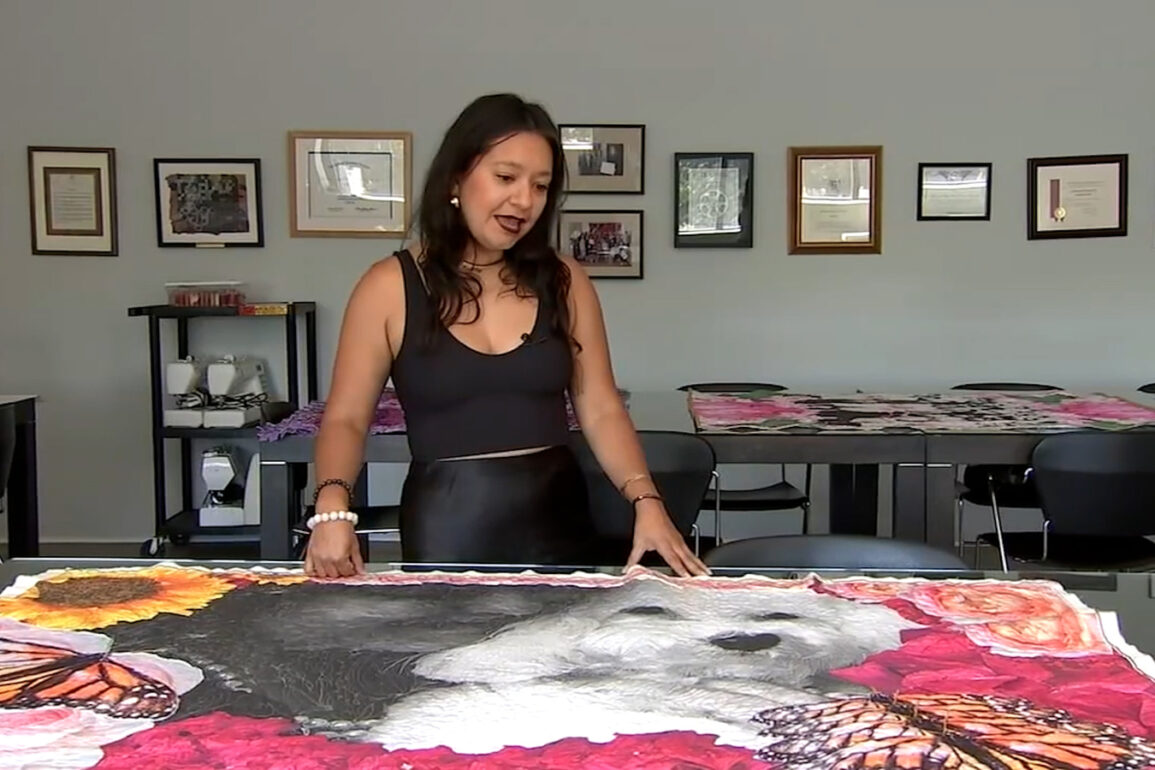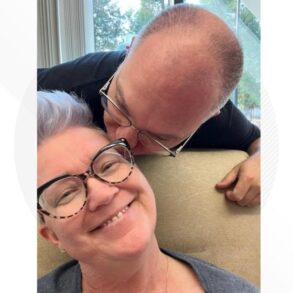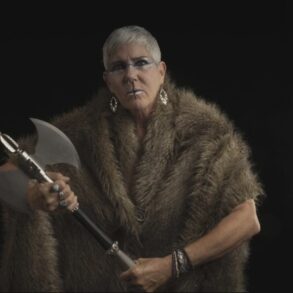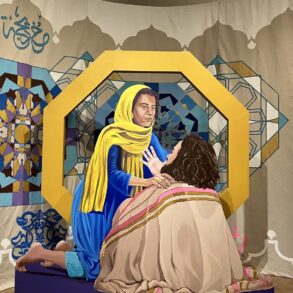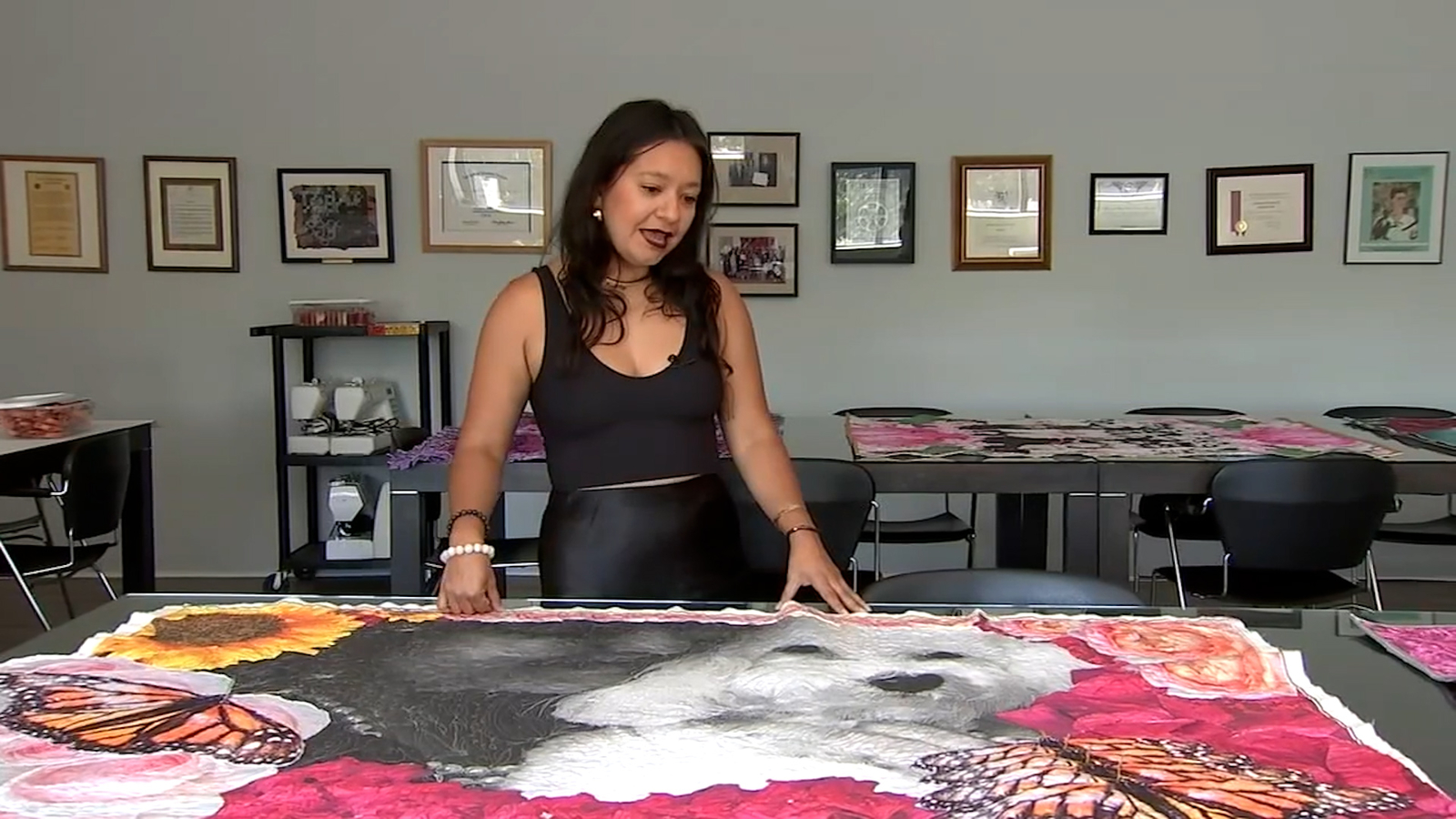
CHICAGO — Carina Yépez has consistently heard the quick staccato rhythm of a sewing machine for as long as she can remember.
“The sound, for me, is very therapeutic,” Yépez said.
A gift and skill handed down from generation to generation, it was her mother who taught Yepez to sew.
Yépez was born in Chicago to Mexican immigrants from the small town of La Haciendita, Guanajuato.
She practices fiber art, which uses quilts, cloths or woven materials. But, Yépez said she takes a more contemporary approach by incorporating digital imagery, specifically of people from her past.
“I’m blending the practice of quilting along with photography, and I’m repurposing or reimagining an image with the material of appliqué, along with free motion and the practice of drawing with machine,” Yépez said.
Fiber art is often labeled a craft mainly because women have been practicing it.
“It was used for domestic use by women for the household, for traditional celebrations like marriage,” Yépez said.
But, the art world is finally taking fiber art seriously.
Yépez said she was approached last year by curators from the Art Institute of Chicago working on an exhibition on loss, absence and grief.
“They knew about my work in memorialized pieces and people,” Yépez said.
SEE ALSO: Chicago’s only Costa Rican restaurant remains popular after 3 decades in business
At the time, Yépez was working on a piece she calls “Mujeres,” which means women in Spanish. It’s based on an old photograph she received from a family friend named Amalia.
“She gave it to me two years before her passing,” Yépez said.
Amalia is in that photo, along with Yépez’s grandmother and a group of seamstresses from her family’s hometown. It was a photo she didn’t even know existed.
“These are the women who used to gather in the town, and chat together and sew together,” Yépez said. “So, it was really just moving for me to be able to create something for them, using tones of femininity.”
The image of those women is enshrined and preserved in the piece, and “Mujeres” will soon hang on the walls of the Art institute in 2025.
“It’s definitely very rare. It’s not very common that living artists are showcased at institutions such as the Art Institute,” Yépez said.
Yepez said she yelled in celebration when she received the news that “Mujeres” was chosen.
“For Latinos to be represented at the Art Institute of Chicago, from Chicago, being born and raised here, I find it such a big deal, and such an honor, that my ancestors have gotten me here to this point,” Yépez said.
Her work has also been on display at the National Museum of Mexican Art in Chicago. And this Día de los Muertos will be no different, with her piece called “Lulú y Lanis.”
It honors her cousin Lulú, who passed away several years ago. It also includes her pup, Lana, who has also now gone to the other side.
The Pilsen-based museum is also where Yépez returns to every week. She helps lead a quilting workshop with a group that helped give Yépez her start. Puntadas de Alma, as they’re called, meets every Saturday, sewing, embroidering and stitching art quilts.
Perhaps like a living, breathing version of her “Mujeres” piece, Yepez said she finds comfort when meeting with the group of women.
“It feels so comfortable and so beautiful to be able to teach with the women that I started this practice with,” Yépez said. “It makes me feel very honored and proud that I get to continue that legacy through a lens of fine art.”




